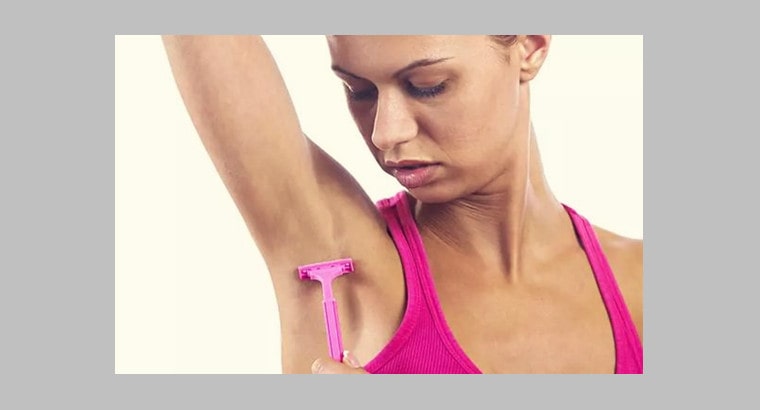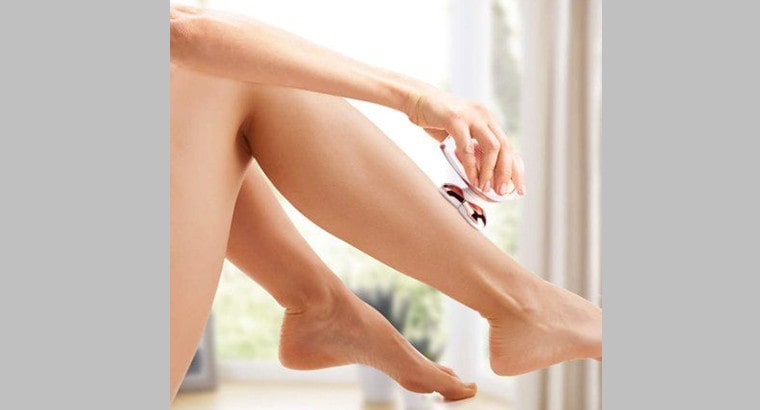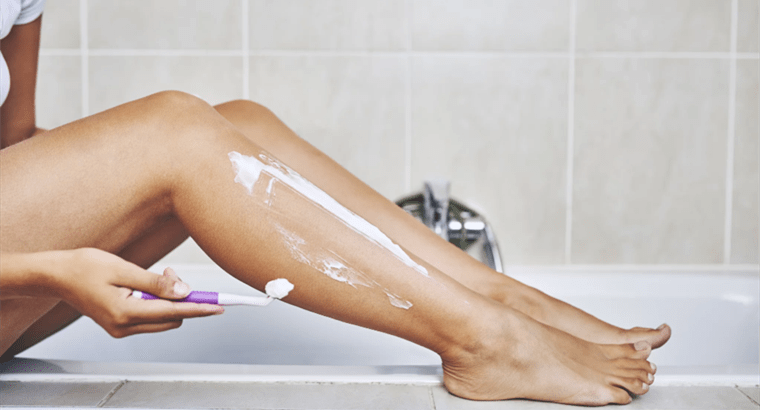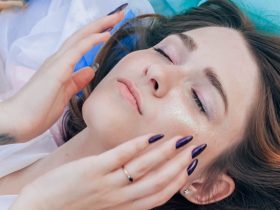If you’ve ever looked up why women started shaving, you’ve likely come across the famous Gillette story. The story goes that during WWII, the Gillette razor company tricked women into thinking they needed to shave to sell more razors. However, don’t let this tall-tale fool you.
While Gillette did play a role in how women handled body hair in the 20th century, the brand wasn’t the sole reason women started shaving. Body hair removal predates the modern era by centuries and has a long and complex history. So, if you’re wondering when women started shaving, here is a complete breakdown of this most ancient grooming practice.
Why Did Women Originally Start Shaving?

Image source: Pinterest
Many people think shaving is a modern beauty regimen. However, it actually has some pretty ancient roots. Cultures all around the world practiced body hair removal for a multitude of religious, moral, and aesthetic reasons.
From Ancient Egyptian honey waxes to modern Gillette commercials, here is how body hair removal changed throughout history and why so many women practiced it.
1. Hair Removal Throughout History
Much like people today, ancient humans thought hairless bodies were the epitome of beauty. In ancient Egypt, both men and women used either heated beeswax or a sugar mixture to remove all the hair on their bodies, including the hair on their heads.
The Greeks thought having pubic hair was ‘barbaric’. So, women would either pluck it with tweezers or singe it off completely. Likewise, the Romans associated hairlessness with high class and wealth. Consequently, it was standard practice for wealthy men and women to use crude depilatory creams, flint, and stones to remove unwanted body hair.
The practice of body hair removal slowed down as the Middle Ages rolled around. While people still removed hair, they didn’t shave their entire bodies. Instead, people mostly focused on removing facial hair.
In the 16th century, Queen Elizabeth I started plucking out her eyebrows and her hairline to make her forehead look larger. The trend quickly caught on and became common practice among many women. In the 17th century, a French doctor created the first razor, which paved the way for Gillette to develop their own line of razors a century later.
Initially, the company marketed the razors to men only since people thought shaving was a masculine activity. However, that all changed in the early 20th century when Gillette decided to shift its marketing to include women as well.
2. Shaving in the Modern Era
The rise of feminism completely revolutionized women’s clothing. Skirts got shorter, and dress sleeves no longer covered up women’s arms. As a result, women were now more exposed, meaning that everyone could see their body hair.
At the same time, the Social Hygiene Movement was on the rise. Progressive activists stressed that shaving was an important part of preventing venereal disease. Likewise, in the 1940s, doctors discovered sex hormones and established a connection between body hair and high levels of testosterone.
Therefore, society started perceiving body hair as manly and unhygienic. Gillette took advantage of public attitudes to start marketing shaving to women as a way to stay feminine and clean. The connection between body hair and cleanliness still persists in the present day.
Nowadays, many activists are pushing back against these outdated norms. Nevertheless, society still has a long way to go before shaving stops being a normal part of a woman’s grooming routine.
When Did Women Start Shaving Different Body Parts?

Image source: Pinterest
Though women had been removing body hair for centuries, they didn’t start properly shaving with razors until the 1940s. However, even then, it wasn’t standard practice to shave every single body part. The shift toward complete hairlessness was gradual and came about as fashion trends and media evolved.
1. Armpits
Armpit hair was the first to get the ax. Short sleeve dresses became popular in the 1920s, making women more open to the idea of shaving their underarms. Gillette capitalized on changing fashion trends and developed Milady Décolleté, a line of razors made especially for women.
They marketed them using the Great Underarm Campaign, a campaign that explained why women should shave their underarms and why they should use razors to do it.
Shaved armpits became the norm afterward. In the 1960s, women in the counterculture movement tried to fight against the practice. However, many people thought not shaving your armpits was extreme, so the resistance stayed on the fringes.
2. Legs
After the arms, leg hair became a target. During WWII, manufacturers repurposed nylon for military use. Therefore, women couldn’t wear stockings every day to hide leg hair.
This, along with the Hygiene Movement and shorter skirts, meant there was social pressure for women to keep their legs shaved. Again, Gillette capitalized on this, launching a line of shaving creams to meet public demand.
Apart from their legs, women were also expected to pluck their eyebrows and remove any facial hair. Interestingly, though the Hygiene Movement was rampant, men didn’t face any of the same social pressure to shave their bodies.
3. Pubic Hair
In many ways, women can thank bikinis and the porn industry for the practice of shaving pubic hair. In the 1950s, it became socially acceptable for women to wear swimwear. So, just like with shorter skirts, women faced pressure to keep their bikini lines trimmed. However, fully shaved private areas didn’t become widespread until the 1980s.
This was the period when the porn industry took off. Films depicting various models with completely shaved private areas sparked an interest in shaving pubes. Some say pornstars did this for entirely practical reasons so that filming would be easier. On the other hand, some believe shaving pubes was a way to push back against feminism.
Feminists at the time were using body hair as a symbol of female independence and empowerment. Therefore, a lot of people had started associating body hair with ‘angry, erratic, and mannish feminists’. So, men’s magazines like Playboy started pushing the hairless, completely shaved woman as the new ideal of female beauty and sexuality.
It’s an association many people still have today. In a recent survey, around 80% of women ages 18‒60 reported that they regularly shaved their private areas.
Hair Shaving: 5 Easy Tips

Image source: Pinterest
Body hair removal has been a staple beauty regimen for centuries. And though it’s become very controversial in recent years, it’s unlikely that it will go away anytime soon. So, if you’re someone who feels more comfortable when you’re shaved, here are five easy tips to give you the smoothest and healthiest skin.
1. Avoid Disposable Razors
If you’re on a tighter budget, then disposable razors are your best friend. They’re cheap, easy to use, and you can buy them in bulk. However, they’re also of very poor quality. You can get maybe two to three shaves out of them before they become too blunt, and you have to toss them out.
Therefore, it’s actually more beneficial to buy a safety razor or a straight razor. They’re not only better for your skin, but you will save money in the long term.
2. Master the Shaving Technique
Shaving is a notoriously tricky art. One wrong move, and you can end up with countless tiny cuts all over your legs. So, to avoid causing damage, you should take the time to master your shaving technique.
The most important tip is to always shave in the opposite direction of growing hair. For your legs, that means shaving upward. However, when it comes to underarm hair, that means shaving from various angles since armpit hair grows in all directions.
3. Always Clean Your Razor
When you shave, you simultaneously remove stubble and dead skin cells. After just a few strokes, the hair and skin will build up between the blades. This clogs them up and creates the perfect breeding ground for bacteria. Therefore, it’s very important to rinse your razor each time you use it so it stays clean and functional.
4. Be Gentle
Shaving can be an annoying and time-consuming process. However, you shouldn’t try to rush through it just because you’re in a hurry. Your skin is incredibly sensitive, so shaving too quickly and applying harsh pressure to it with your razor can cause razor burns and cuts.
5. Shave After Showering
As tempting as it is to take the razor to your legs the second you step into the shower, stay your hand. You’ll actually get a cleaner shave after you’ve washed with shampoo and exfoliated your skin. Hot water helps unclog pores and soften your hairs, thus allowing you to get a closer shave.
Featured image source: Pinterest.com










